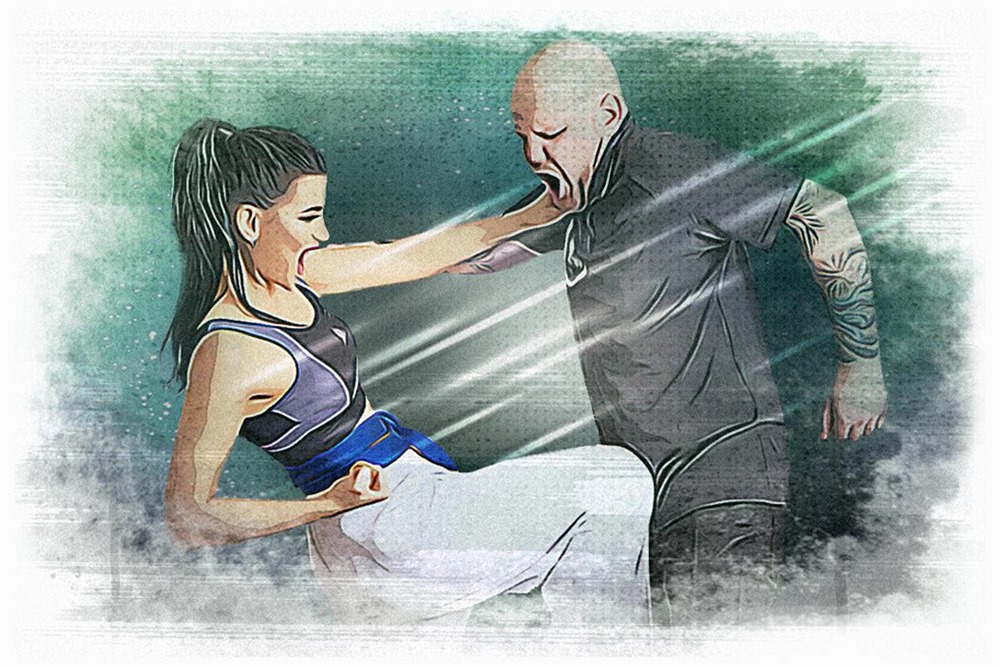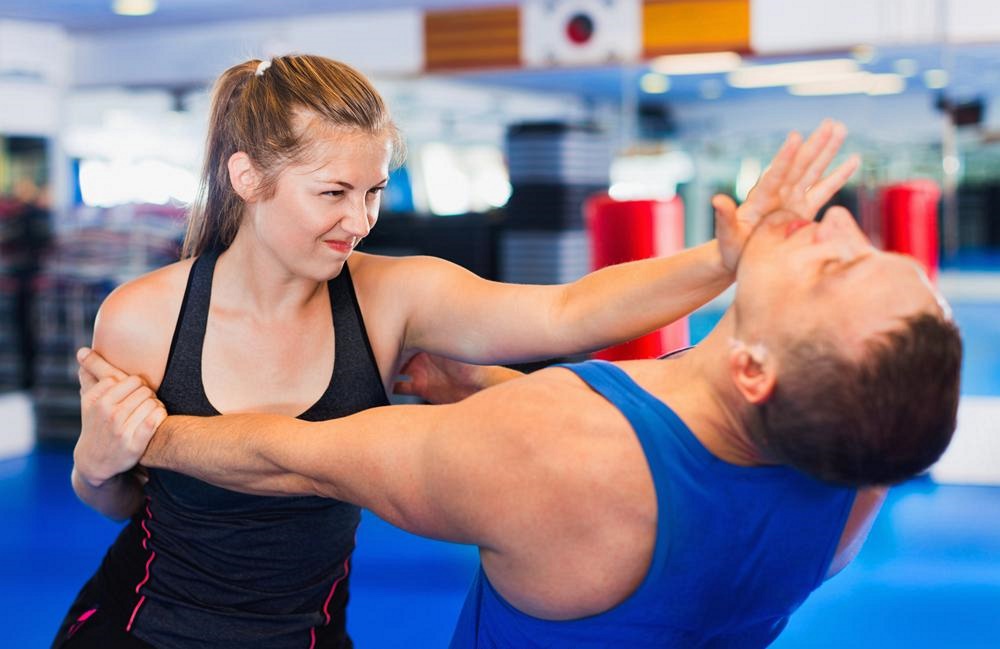Last Updated on: 18th December 2024, 12:32 pm
Martial arts combine physical fitness with self-defense techniques. Originally developed for combat, they now offer a holistic approach to wellness. This combination enhances physical abilities and mental focus, making martial arts a comprehensive workout.
- The history of martial arts is rich, with roots in ancient civilizations where combat readiness and physical conditioning were key.
- Today, martial arts are popular in fitness culture worldwide, attracting people for both self-defense and physical conditioning.
Martial arts exemplify the synergy between strength, agility, and self-protection. This makes them appealing for those seeking to improve fitness while learning self-defense. Their growing popularity highlights their effectiveness as a dual-purpose fitness strategy.
The Fitness Benefits of Martial Arts

Cardiovascular Health Improvements
Martial arts training boosts cardiovascular health. High-intensity drills and sparring increase heart rate, strengthening the heart and promoting healthy circulation, reducing heart disease risk, and enhancing endurance.
Strength and Flexibility Enhancements
- Building muscle strength: Techniques like grappling and striking build muscle strength.
- Enhancing flexibility: Sessions engage and stretch all muscle groups, leading to a toned and flexible physique.
Weight Management and Body Composition Transformation
Martial arts aid in weight loss and body transformation. High-calorie burn and muscle strengthening help shed fat and build lean muscle, aiding weight management and body sculpting.
Mental Health Benefits
- Stress relief: Martial arts relieve stress, providing an outlet for tension and anxiety.
- Mental clarity: Focus during practice enhances mental clarity and discipline.
Incorporating martial arts into your fitness regime offers cardiovascular, strength, and mental health benefits. It transforms the body and sharpens the mind, making it ideal for a dynamic wellness path.
Choosing the Right Martial Art for You

Choosing a martial art depends on your fitness and self-defense goals. Options include Karate, Taekwondo, Jiu-Jitsu, and Muay Thai. Karate focuses on discipline and striking, Taekwondo on agility and leg techniques, Jiu-Jitsu on ground fighting, and Muay Thai on clinch and elbow strikes.
- Consider your personal fitness goals, self-defense needs, physical limitations, and interests. Decide if you want to improve cardiovascular health, flexibility, or strength, or learn practical self-defense skills.
- Trying different classes is crucial. Engage with instructors, ask questions, and experience the art firsthand to understand the physical demands and community atmosphere.
The right martial art aligns with your goals, challenges you, and inspires growth. Whether it’s Karate, Taekwondo, Jiu-Jitsu, or Muay Thai, each offers a path to fitness, self-defense, and personal development.
Integrating Martial Arts into Your Fitness Routine

Tips for Beginners on Starting Martial Arts Training
Start martial arts training by choosing a discipline that matches your goals. Begin slowly, focusing on mastering basics. Consistency is key in the early stages.
Balancing Martial Arts with Other Fitness Activities
- Listen to your body: Include rest days to prevent overtraining.
- Balance high-intensity martial arts sessions with lower-impact activities like yoga or swimming to prevent injury and promote a well-rounded fitness regimen.
Setting Realistic Goals and Tracking Progress
Set achievable goals for fitness and self-defense skills. Track progress through assessments and reflections. Celebrate achievements and adjust goals as you evolve.
Integrating martial arts into your fitness routine enhances physical health, mental resilience, and self-defense capabilities. With the right approach, you can embark on a fulfilling journey that transforms your body and mind.
Self-Defense Skills Through Martial Arts

Practical Self-Defense Techniques
Martial arts provide practical self-defense techniques. Disciplines like Karate and Jiu-Jitsu equip practitioners with skills for real-world defense scenarios, focusing on strategic force application.
The Psychological Edge
Martial arts enhance psychological conditioning. Awareness and confidence are sharpened, deterring aggressors. Calmness under pressure is developed, complementing physical skills.
Real-World Applicability
Martial arts prepare practitioners for real-life confrontations through scenario training. This fosters an adaptive mindset for applying skills effectively in various situations.
Martial arts blend practical techniques with psychological readiness, preparing individuals for potential threats and contributing to overall well-being.
The Community and Cultural Aspect of Martial Arts

Nurturing Personal Growth within the Martial Arts Community
- The martial arts community fosters personal development, forming a supportive network that encourages perseverance and learning.
- This camaraderie motivates individuals to push beyond limits, celebrating triumphs and learning from setbacks.
- The shared journey of growth creates a bond that enriches lives both on and off the mat.
Respect for Martial Arts’ Cultural Heritage
- Understanding the cultural origins of martial arts is crucial. Each discipline carries a legacy steeped in history.
- Acknowledging this heritage enriches practice, connecting practitioners with the art on a profound level.
- It’s a gesture of honor towards the generations of masters who preserved these arts.
Discipline and Belonging through Martial Arts
- Martial arts instill a strong sense of discipline, shaping character and fostering a disciplined approach to challenges.
- This structured environment provides a framework for self-improvement beyond physical skills.
- The sense of belonging from training with like-minded individuals is powerful, creating an inclusive space for growth.
Embracing martial arts means joining a community rich in diversity and unity. It’s a world where cultural appreciation, personal growth, and the pursuit of excellence converge.
Bringing It All Together
Martial arts empower body and mind. This discipline fosters resilience, blending physical prowess with mental clarity. Through martial arts, individuals achieve a balance of fitness, self-defense, and personal growth, embracing challenges as pathways to empowerment. Let martial arts guide you to a stronger, more confident self.

